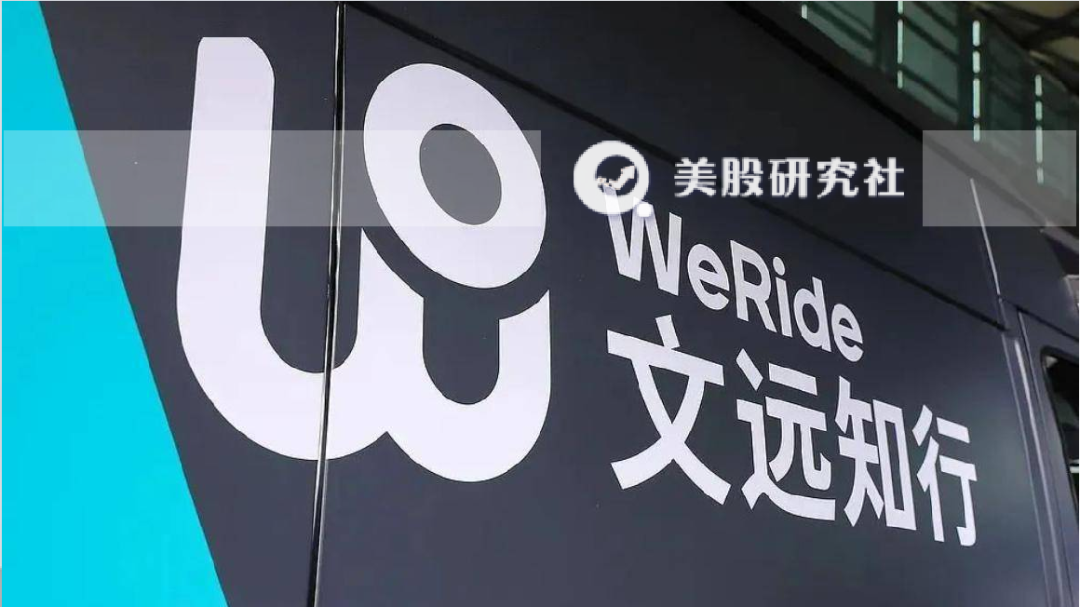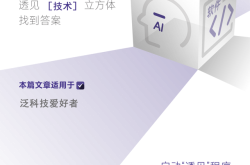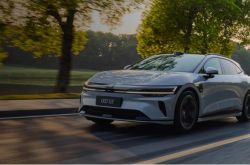Robotaxi Revenue Soars by 836%: Has the Tipping Point for Autonomous Driving Commercialization Arrived?
![]() 08/08 2025
08/08 2025
![]() 413
413

Source: US Stock Research Institute
From collaborations between WeRide and Pony.ai with Uber, to Tesla's frequent price adjustments for its applications, the anticipation of Robotaxi commercialization has consistently been a focal point in both domestic and international markets over the past year.
Recently, WeRide (Nasdaq: WRD), a U.S.-listed company, released its financial report for the period ending June 30, 2025. Notably, Robotaxi business revenue surged by 836.7% year-over-year in the second quarter, reaching RMB 45.9 million, setting a new company record for single-quarter revenue. The corresponding revenue proportion also significantly increased to 36.1%, marking a new single-quarter high since 2021.
As 'autonomous driving commercialization' transitions from concept to financial figures, WeRide's growth trajectory may hold the key to unlocking the industry's potential.
Record Robotaxi Revenue in the Second Quarter
Half of Total Revenue
If there was a 'standout event' in the autonomous driving industry during the second quarter of 2025, WeRide's explosive growth in Robotaxi business is undoubtedly one of them.
The financial report revealed that WeRide's revenue for the second quarter of 2025 amounted to RMB 127 million (approximately US$17.8 million), a 60.8% increase from RMB 79.1 million in the same period last year.
Compared to previous performance, the most significant difference lies in the acceleration of Robotaxi commercialization. WeRide has transitioned from a company reliant on a single performance pillar to one dominated by a product-centric business realization cycle, supplemented by services.
In a sense, this marks the first operational turning point for WeRide, officially entering the commercialization stage.
Among its various revenue streams, service revenue remains the largest source of income, totaling RMB 67.4 million during the reporting period, a 4.3% increase year-over-year from RMB 64.6 million in the same period of 2024. This growth is primarily attributed to an increase of RMB 35.8 million in intelligent data service revenue since the second half of 2024 and an additional RMB 2.5 million from autonomous driving-related operation and technical support services. However, as customized R&D services for some customers were completed in the third quarter of 2024, ADAS R&D service revenue decreased by RMB 35.5 million, partially offsetting this growth.
Nonetheless, the surge in product revenue is even more prominent, rising significantly from RMB 14.6 million in the same period of 2024 to RMB 59.8 million, nearly matching the level of service revenue. The company explained that this growth is mainly due to increased sales of autonomous taxis and autonomous sweeping robots in the second quarter of 2025, partially offset by a decline in autonomous bus sales.
During the reporting period, Robotaxi revenue accounted for 36.1% of WeRide's total revenue, representing the highest quarterly revenue contribution from the Robotaxi business since 2021.
Robotaxi business revenue soared more than eightfold year-over-year, setting a new record for the company's highest quarterly revenue since its inception. This impressive growth is largely due to the implementation of its 'globalization + scale' dual-wheel drive strategy.
Fleet Triples
WeRide's CEO states, 'The critical moment has arrived!'
Firstly, in terms of global layout, according to the financial report, the scale of the Robotaxi fleet created in collaboration with Uber in Abu Dhabi, UAE, has tripled since December 2024. The operation area has expanded to include Al Reem Island and Al Mariyah Island, covering nearly half of Abu Dhabi's core urban areas, with order volume expected to double.
This fleet is the largest Robotaxi fleet in the Middle East, utilizing WeRide's new generation of GXR models—a mass-produced Robotaxi model designed for large-scale commercial deployment, accommodating up to five passengers. Each vehicle is anticipated to complete dozens of orders per day within a 12-hour operational shift, with each trip typically exceeding 6 kilometers.
The two companies plan to further expand the fleet to hundreds of Robotaxis. According to the plan, the operation area is expected to extend to Khalifa City, Masdar City, and more regions within 2025. Additionally, unmanned Robotaxi road tests have been launched in the Middle East.
Therefore, as we enter the second half of the year, WeRide's overseas expansion pace will continue to accelerate. In Dubai, UAE, WeRide signed a cooperation agreement with Uber and the Dubai Roads and Transport Authority to deploy commercial Robotaxi travel services in Dubai. Road tests for Robotaxi have commenced, with trial operations expected to begin this year, and commercial operations of fully unmanned Robotaxi are scheduled to start in 2026. In Riyadh, Saudi Arabia, WeRide's Robotaxi recently obtained a Saudi autonomous driving license and launched the first Robotaxi trial operation service in Saudi Arabia.
WeRide's Robotaxi business has subtly demonstrated signs of a qualitative shift from 'single-point testing' to 'regional networks'.
In China, WeRide has also pressed the 'accelerate' button: In July, it collaborated with Chery and Jinjiang Taxi to obtain approval for the demonstration application of driverless public road passenger transport in Pudong New Area, providing L4-level shuttle services for the 2025 World Artificial Intelligence Conference, officially opening its 10th city globally. In first-tier cities such as Shanghai and Guangzhou, as policies gradually ease restrictions on L4-level operations, WeRide's Robotaxi has transformed from a 'test vehicle' to a 'quasi-commercial vehicle'.
Tony Han, founder and CEO of WeRide, emphasized that the company's performance in the second quarter signifies a pivotal moment in WeRide's global journey. The rapid growth of the Robotaxi business fully demonstrates that the company's strategic vision, centered on simultaneous expansion and in-depth cooperation domestically and internationally, is bearing fruit.
Phase of Competing in Implementation Capabilities
Robotaxi Players Accelerate 'Early Starts'
However, in terms of profit quality, the explosion in WeRide's Robotaxi business has not yet reached the stage of achieving a commercial positive cycle.
The financial report shows that WeRide achieved a gross profit of RMB 29.1 million in the second quarter, with a corresponding gross profit margin of 48.6%. Burdened by costs such as research and development, services, and administrative management, its expenses increased from RMB 342.4 million in the same period last year to RMB 488 million, resulting in a net loss of RMB 406 million.
Fortunately, its single-car economy has shown signs of improvement. The large-scale operations in overseas markets like Abu Dhabi and Dubai are driving the continuous decline of 'cost per kilometer', and commercial feasibility is becoming increasingly apparent. At the same time, its Robotaxi vehicles have achieved the ability to share 90% of parts across different products, and it is anticipated that the cost of its next-generation products can be reduced by 20% to 30% through parts sharing mechanisms.
As WeRide CFO Li Xuan noted, 'With the support of global strategic partners, we are approaching a critical inflection point—efficiently operating a Robotaxi fleet with a sustainable single-car economic model is becoming a reality.'
In an increasingly healthy business cycle, WeRide also maintains relatively robust liquidity. As of June 30, 2025, WeRide held cash and cash equivalents of RMB 4.0879 billion and time deposits of RMB 1.7353 billion. These figures imply that the company has abundant resource reserves for its subsequent expansion and operations.
From an industry perspective, WeRide's explosive growth is not an isolated incident.
Similarly, Pony.ai's financial report released in May this year revealed that it achieved revenue of approximately US$7.8 million in the first fiscal quarter of fiscal year 2025, a year-over-year increase of 4.2%, accounting for approximately 56% of the company's total revenue. During the same period, Robotaxi revenue was approximately US$1.7 million, a year-over-year increase of 200.3%.
Behind the structural performance explosions of these two companies lies the fact that the entire industry is gradually maturing across multiple dimensions, including policy and technology. The global Robotaxi sector has entered an 'early start' period, and the 'technology + operation' dual advantages of Chinese enterprises cannot be underestimated.
On the policy front, the U.S. Department of Transportation issued relevant policies in April to simplify the testing and reporting of driverless technology.
Domestically, Shanghai's 'Action Plan' clearly states that by 2027, 6 million passenger trips of L4 level will be achieved, with over 5,000 kilometers of open roads, and new vehicles with L2 and L3 functions accounting for over 90%. This means that autonomous driving will shift from 'specific area testing' to 'city-level network operation'.
Yan Yiyang, an analyst at Frost & Sullivan, pointed out that 'This policy breaks the limitations of previous 'small circle' pilots and promotes the true integration of autonomous driving into the urban traffic ecosystem.' Similarly, regions such as Beijing, Guangzhou, Shenzhen, the Middle East, and Europe are also accelerating the opening of policies to pave the way for Robotaxi commercialization.
On the industry side, supply and demand are always the core of an industry's official landing, and the Robotaxi model is no exception.
On the supply side, cost reduction in hardware is one of the three core elements for the large-scale commercialization of Robotaxi. In this regard, Guohai Securities pointed out that the cost of Baidu Apollo Go's sixth-generation model has dropped to US$29,000, a 60% reduction from the fifth generation. Pony.ai's Robotaxi model equipped with the seventh-generation autonomous driving system solution uses 100% automotive-grade components, and the total cost of the autonomous driving suite has decreased by 70% compared to the previous generation. Additionally, Luobo Kuaipao/Pony.ai are expected to achieve profitability.
In terms of commercial scenario implementation, since the beginning of this year, WeRide has extended its autonomous driving technology to multiple categories such as Robotaxi, Robobus (autonomous minibus), and Robosweeper (L4-level sanitation vehicle), covering 30 cities in 10 countries, with pre-installed mass-produced products landing in France, Spain, Singapore, and other nations.
In the operation and maintenance system, Ruqi Chuxing released the 'Robotaxi+' strategy in July, planning to invest billions of funds over the next five years to expand operational coverage to 100 core cities, build a three-tier operation and maintenance network, and support the offline operation and maintenance capacity of 100,000 Robotaxis annually.
Jiang Hua, CEO of Ruqi Chuxing, also stated that the Robotaxi sector has entered a stage of competing in implementation capabilities, 'Whether it can achieve large-scale commercial landing determines whether players are qualified to continue in this sector.'
Many institutions believe that the current industry 'tipping point has arrived' and expect Robotaxi to achieve overall business break-even in the next 3-4 years, entering a self-financing stage. Once the profitability model is verified, the market will embark on a period of rapid development.






